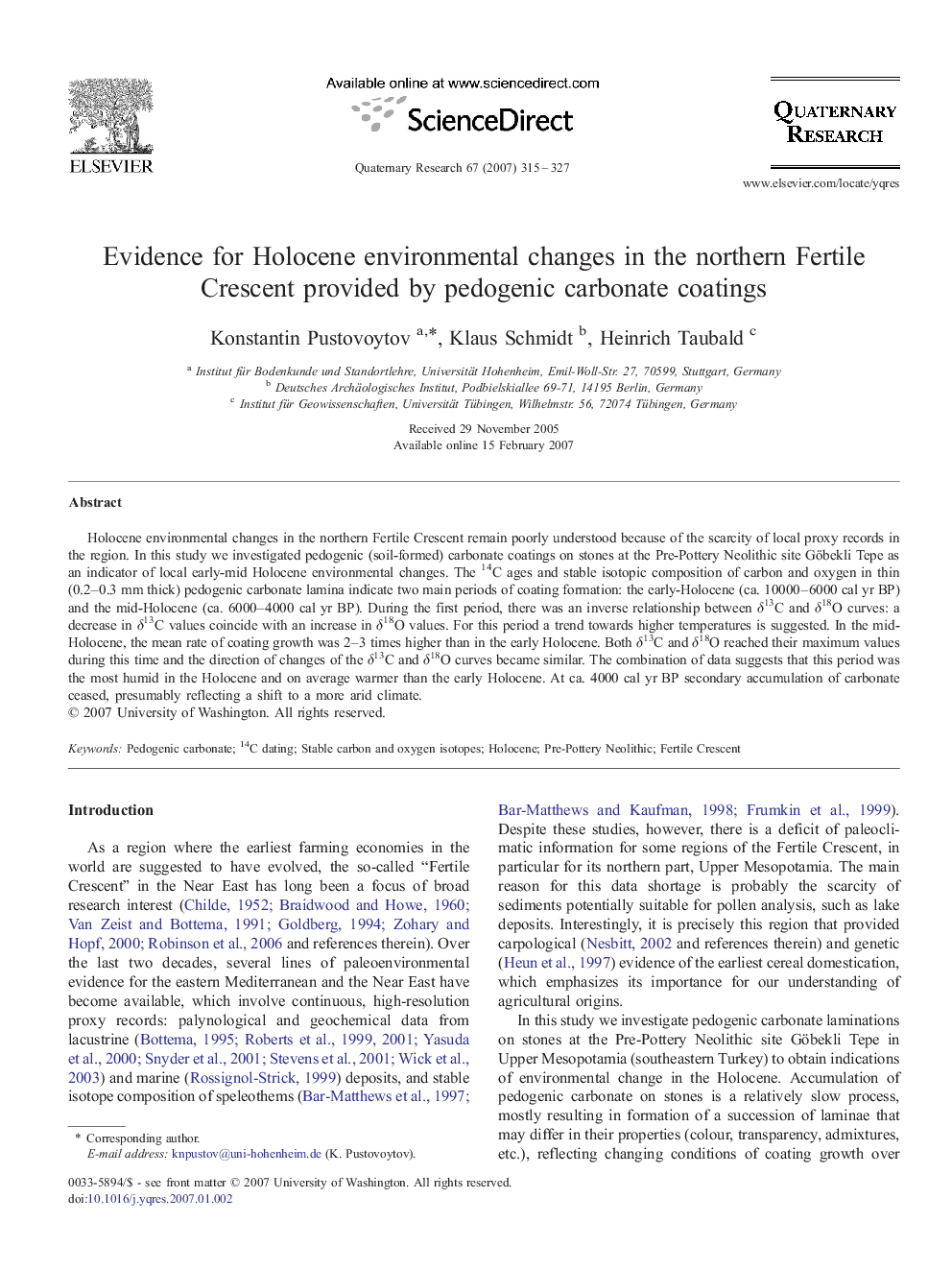| Article ID | Journal | Published Year | Pages | File Type |
|---|---|---|---|---|
| 1046214 | Quaternary Research | 2007 | 13 Pages |
Holocene environmental changes in the northern Fertile Crescent remain poorly understood because of the scarcity of local proxy records in the region. In this study we investigated pedogenic (soil-formed) carbonate coatings on stones at the Pre-Pottery Neolithic site Göbekli Tepe as an indicator of local early-mid Holocene environmental changes. The 14C ages and stable isotopic composition of carbon and oxygen in thin (0.2–0.3 mm thick) pedogenic carbonate lamina indicate two main periods of coating formation: the early-Holocene (ca. 10000–6000 cal yr BP) and the mid-Holocene (ca. 6000–4000 cal yr BP). During the first period, there was an inverse relationship between δ13C and δ18O curves: a decrease in δ13C values coincide with an increase in δ18O values. For this period a trend towards higher temperatures is suggested. In the mid-Holocene, the mean rate of coating growth was 2–3 times higher than in the early Holocene. Both δ13C and δ18O reached their maximum values during this time and the direction of changes of the δ13C and δ18O curves became similar. The combination of data suggests that this period was the most humid in the Holocene and on average warmer than the early Holocene. At ca. 4000 cal yr BP secondary accumulation of carbonate ceased, presumably reflecting a shift to a more arid climate.
